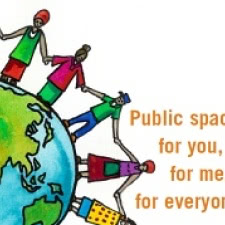Advanced Search
Search Results
31 results found
Statistical Brief 15 discusses the importance and relevance of the definition of informal employment to the economies of developed countries and to studying trends in the structure of employment across all countries. It then reviews the criteria in the International Conference of Labour...
Numerous state-level studies show that between 10 and 20 percent of employers misclassify at least one worker as an independent contractor.
Abstract: The informal workforce represents more than half of all workers in most developing countries and a significant share of workers in developed countries. This paper summarizes the history and forms of organizing informal workers, providing a timeline of organizing, typologies of organization...
This article appears in Volume 16 of the publication of Labor and Employment Relations Association , Champaign, Il, pages 18-104. To access the article you must be a member of LERA. See also: Global Networking: Informal Workers Build Solidarity, Power, and Representation Through Networks and...
Choma Choma Nalushaka made an arduous journey from war-torn Congo to South Africa—then waited years for his family to join him. He has established himself as a street barber in his new home in Durban, but the challenges of an informally-employed refugee are many.
This working paper offers new regional estimates on informal employment based on direct measures from 40 countries and indirect measures from another 80 countries. James Heintz (University of Massachusetts) prepared the regional estimates. This publication serves as a companion to a publication...
This organizing brief, written for researchers and activists concerned about informal workers, aims to capture the full range of organizational forms for voice and representation of informal workers, from formal union structures, to associations, to cooperatives, to global networks and with goals...
Over the past three decades informal workers, mainly in the global South and their organizations have joined and launched global networks of solidarity, advocacy and militancy. This paper reviews several key differences in some five of the largest global and transnational networks of informal...
This paper addresses the importance of developing a common framework for defining informal employment in developed countries, and highlights issues that arise when applying the definition of informal employment recommended by the International Conference of Labour Statisticians (ICLS) to developed...
Abstract: Despite numerous similarities between the food retail sectors of France and the USA, there are significant contrasts in the jobs, and in particular the modal job, cashier. Notably, there are differences in pay, productivity and physical working position. Using the concept of ‘national...
Videos / Slideshows / Audio
Millions of women work long hours, in dangerous conditions, for little pay. They are fighting for change, with the help of ILO Convention 189 on Decent Work for Domestic Workers. Watch this video to learn how.
Workers Education/Organizing Materials
This manual helps street vendors learn more about the regulations that govern public space and how to defend the right to work in public space. It describes successful actions taken by street vendor organizations. And it offers information to help you organize and negotiate with local government.
WIEGO Working Papers
Mike Rogan reviews how informal workers are taxed, why there is growing interest in taxing them, and whether they should be included in the tax net.



